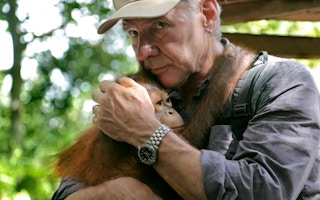Here’s our pick of the 5 major developments in 2014:
To continue reading, subscribe to Eco‑Business.
There's something for everyone. We offer a range of subscription plans.
- Access our stories and receive our Insights Weekly newsletter with the free EB Member plan.
- Unlock unlimited access to our content and archive with EB Circle.
- Publish your content with EB Premium.
1. It’s a hotter world
Scientists across the globe have issued warnings this year that point to one conclusion: it is a warming world, and there is no sign that it is slowing down or at a standstill. Last year was the hottest year on record, but 2014 is now looking to surpass that, according to the World Meteorological Organisation. Oceanographers have also found new evidence which reveals that the extra heat being produced is concentrating not in the skies, but in the seas.
At the same time, many of the biggest names in Hollywood launched campaigns to raise awareness on climate change this year. This included a documentary series titled Years of Living Dangerously, starring Harrison Ford, Matt Damon, Don Cheadle and Arnold Schwarzenegger. Julia Roberts, Kevin Spacey and Edward Norton, among others, also lent their voices for the filming of NatureIsSpeaking, a new video campaign released by international non-profit group Conservation International.
2. Climate, migration and the growing population
The intergovernmental body International Organization for Migration has started a new research programme which aims to raise the importance of environmental migration at the heart of the climate debate. IOM wants policy makers to place greater consideration to migration in climate change negotiations. It said: “Migration in the face of global environmental change may not be just part of the ‘problem’, but can also be part of the solution.”
Separately, in a report published by the United States journal Science in October, demographers projected that the global population could rise as high as 12.3 billion by 2100 (up from earlier projections of 9.6 billion), and warned that this could have alarming implications for political stability, food security and climate change.
3. The future of forests and natural carbon sinks
Numerous studies published this year have highlighted the need to protect forests as part of the solution to climate change. Scientists also warned that loss of tropical rainforests would be a double whammy threat to the climate as it would impact the weather in the rest of the world.
In the Amazon, peatlands have been found to be the richest and most carbon dense ecosystem. In Asia, the degradation of peatlands due to plantation development is believed to be one of the biggest sources of haze pollution. In the same way, wetlands, if drained for human habitation and agriculture, would cause significant amounts of carbon dioxide to be released into the atmosphere.
Policy researchers say that government protection and legal recognition of community forest rights are key to curbing significant carbon emissions.
4. Prospects in carbon capture technologies
Two new plants operating in Canada have shown the potential of carbon capture and storage technologies as one of the solutions to reduce emissions in the atmosphere. CarbonCure Technologies, a clean-tech company based in Halifax, Nova Scotia successfully found a way to inject carbon dioxide into the production of concrete blocks, while Saskpower, a utility firm in Saskachewan, opened last October the world’s first carbon capture plant for one of its coal-fired facility.
About 56 countries belonging to the UN Economic Commission for Europe believe carbon capture should be part of the global climate change agreement in Paris next year and should be equally given fiscal incentives to develop. However, former World Bank chief economist Nicholas Stern said plans to use CCS to reduce emissions would mean thousands of power plants and factories will need to be fitted with it.
5. Geoengineering controversy
Geoengineering, according to some scientists, may be good for the planet, but fixing climate change through several technological experiments to neutralise the consequences of man-made emissions could even bring in more heat, disrupt the Indian monsoon and harm billions of people, they warned.
Many of the experiments, including dumping more iron into the sea to produce more plankton and thus, absorb more carbon, showed limited success. The future, according to them, cannot be solved by technological fixes.
This story is part of our Year in review series, which looks at the top stories that shaped the business and sustainability scene in each of our 11 categories.














